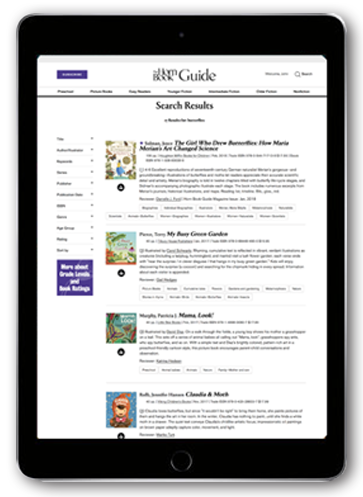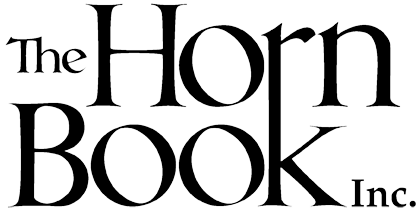Diseases--Influenza
46 Reviews
(1)
YA
Epidemiologists are scientists who study the causes, patterns, and control of diseases in groups of people. Positioning epidemiologists as forensic detectives, Cherrix examines six case studies that convey the scope and importance of their work. Opening with the appearance of a mysterious illness within the Navajo Nation in 1993, she shows how, through a series of breakthroughs, scientists were able to identify this illness as rodent-borne hantavirus. (As Cherrix points out, it was widely known in Indigenous communities that the mice carried disease; this was simply a confirmation of Native knowledge.) Cherrix then revisits a nineteenth-century London outbreak of cholera; the decades-long hunt for the virus that caused the influenza pandemic of 1918; the creativity and cooperation that led to the global eradication of smallpox; the medical activism of the HIV/AIDS epidemic; and the recent COVID-19 pandemic. Throughout these riveting profiles, we learn how health and science professionals cooperate, collaborate, and corroborate to develop increasingly effective vaccines; we also learn about the contributions of historically marginalized communities in these efforts. Dr. Anthony Fauci plays a leading role in both the HIV/AIDS and COVID-19 overviews, allowing readers who might only have heard of his COVID pandemic work to see him in a different context. Occasional sidebars and captioned photographs complement the text, while an extensive bibliography, comprehensive source notes, and an index (unseen) are appended.
Reviewer: Jonathan Hunt
| Horn Book Magazine Issue:
January, 2025
(2)
K-3
Illustrated by
Aly McKnight.
A young girl and her family eagerly prepare for and take part in the Jingle Dress dance, an Anishinaabe tradition established during the 1918 1919 influenza pandemic. Havrelock's (Saddle Lake Cree Nation) straightforward text incorporates vivid sensory imagery ("buckles shine, beads glimmer"; "Mom's warm fingers slide through my hair") and realistic details ("Everyone gets a big shot of hair spray!"), and evokes both the contemporary and the traditional while capturing the narrator's excitement. McKnight's (Shoshone-Bannock) colorful watercolor and graphite illustrations focus on the family and the regalia, and include such details as the different colors of black in a girl's braids; the variety of Indigenous people's hair colors and textures; the jingles on dresses that sway so convincingly you can almost hear them; and a red handprint covering the mouth of a woman watching the dance, signifying her solidarity with Missing and Murdered Indigenous Women, Girls, and Two-Spirit People. Back matter gives more information about this century-old ritual of healing and thanks, including its significance in the wake of COVID-19 with its devastating effect on Native communities. A moving portrayal of how Jingle Dress dancers "dance for those who can't."
(2)
YA
In comics format, Brown (The Unwanted) recounts the deadly Spanish Flu pandemic of 1918, which brought "sickness to a third of the planet and death to millions of people." In his illustrations, Brown employs striking visual angles that produce maximum emotional impact while still conveying solid, accurate information. He succinctly traces the evolution of the medical disaster with statistics and anecdotes woven in, while his somber, muted palette expertly captures the mood of the period. Bib.
Reviewer: Jonathan Hunt
| Horn Book Magazine Issue:
November, 2019
(2)
4-6
A group of fifth graders goes ghost-hunting and learns about the Spanish influenza after new-kid Henry reveals that his house is haunted. Narrator Barbara Anne takes charge of solving the mystery of young ghost Edgar, leading to answers (and minor disasters). Clever turns of phrase and Barbara Anne's limited sense of self-awareness make for an amusing narrative, while depictions of Edgar's presence deliver age-appropriate chills.
Reviewer: Sarah Rettger
| Horn Book Magazine Issue:
September, 2019
Davis, Kenneth C.
More Deadly Than War: The Hidden History of the Spanish Flu and the First World War
(3)
YA
Despite the overwhelming number of people killed by the great Spanish flu pandemic of 1918, it virtually disappeared from our national consciousness, not to mention our history books. Then, too, it's a history that is inextricably linked to WWI and the global movement of troops. Davis's volume does an admirable job of juggling both narratives, supported by a generous assortment of photographs. Timeline. Bib., ind.
Reviewer: Jonathan Hunt
(2)
YA
Between 1918 and 1920, three waves of a very aggressive influenza virus killed tens of millions of people. World War I was in full swing when the flu pandemic began, and it was abetted by the widespread movement of troops and limited medical knowledge. Marrin's narrative is enhanced by primary source quotations, black-and-white photographs, and maps, all revealing the toll the pandemic took. Bib., ind.
Reviewer: Jonathan Hunt
| Horn Book Magazine Issue:
March, 2018
(3)
YA
When her emotions are high, talented coder Luisa Ochoa-Jones experiences "sensory misfires": sights have temperature, sounds have taste, etc. Still, she wants life after high school to be on her own terms and pursues a big-name tech scholarship--which, it turns out, might help her save humanity from a deadly flu epidemic. The novel's not-too-distant-future setting and somber but urgent tone should prompt deep existential thoughts.
Reviewer: Jeannie Coutant
(2)
4-6
In 1918, sixth-grade new girl Annie is befriended by the clingy, awful Elsie Schneider. Then the Spanish influenza epidemic hits, and Elsie dies. Elsie's vengeful ghost hijacks Annie's voice and hurls insults at those who wronged Elsie. Hahn excels in atmosphere and mood, and Elsie's claustrophobic presence chills throughout. This unsettling ghost story adroitly incorporates the historical setting with themes of bullying and personal responsibility.
Reviewer: Betty Carter
| Horn Book Magazine Issue:
May, 2017
(4)
K-3
Illustrated by
David C. Gardner.
This wordy story offers an ultimately hopeful picture of immigrant children in WWI-era New York City during the influenza outbreak. With a sick mother, soldier father, housework, and younger siblings to care for, young tenement girl Rettie's only opportunity for extra pennies is at the annual "Ragamuffin Parade" on Thanksgiving. Painterly illustrations offer hazy depictions of place, time, and living situation; an author's note offers historical context.
(4)
YA
Horrors of History series.
In this novel set in Philadelphia, Anderson explores the 1918 Spanish Flu pandemic through the eyes of several fictional characters and the real-life director of public health and charities, Dr. Wilmer Krusen. The horror of swift and gruesome death is reflected in the surviving and uninfected characters, the young seminarians who became gravediggers, and Krusen's frustrations. Black-and-white archival photos are included; unfortunately, sources and resources are not.
Reviewer: Gail Hedges
(2)
YA
When the 1918 Spanish influenza pandemic strikes, seventeen-year-old Cleo responds to a call for volunteers from the Red Cross. She comes face-to-face not just with the invisible menace of the disease but also with anti-German sentiment and the mortality of her friends and loved ones. The setting of this novel, with meticulous but unobtrusive details, is remarkably realized.
Reviewer: Jonathan Hunt
| Horn Book Magazine Issue:
July, 2014
(4)
4-6
History's Greatest Disasters series.
The 1918 pandemic killed millions, but it took researchers decades to identify the culprit as a virus and learn how it spreads to humans. A vaccine wasn't developed until 1944. A matter-of-fact text describes the illness's devastation; archival photos, graphs, and informative sidebars tell their own horrific story. Writing exercises and prompts to visit the publisher's website are intrusive. Reading list, timeline. Glos., ind.
Reviewer: Jack Forman
Silverstein, Alvin
, Silverstein, Virginia
& Nunn, Laura Silverstein
Handy Health Guide to Colds and Flu
(3)
4-6
Handy Health Guides series.
This series by a veteran health-writing team offers solid, clearly presented information on uncluttered, easy-to-navigate pages. The accessible texts are ably supported by well-chosen and -captioned photos and diagrams; sidebars feature related facts, activities, and health tips. Volumes focusing on disease discuss characteristics and causes, effective treatments, and prevention. There are six other fall 2013 books in this series. Reading list, websites. Glos., ind.
Reviewer: Kitty Flynn
(4)
YA
Against the graphic backdrop of the 1918 flu pandemic and the horrific physical condition of many soldiers returning from WWI, sixteen-year-old skeptic Mary Shelley Black begins to question her opinions about the spiritualist movement when she finds she's able to communicate with her deceased lover. This novel's vivid San Diego setting is enhanced with well-chosen archival photographs, but the plot is overburdened with events.
Reviewer: Betty Carter
(4)
YA
Perspectives on Diseases and Disorders series.
Each book includes three sections: "Understanding," "Controversies" (or "Issues"), and "Personal Experiences." The sections contain previously published essays about the topics, often with conflicting perspectives that are impossible to assess without medical background. "Personal Experiences" could be useful for readers wanting to know more about individual cases. Photos, charts, and graphs are included. Reading list, timeline. Glos., ind. Review covers these Perspectives on Diseases and Disorders titles: Sleep Disorders, Food-Borne Diseases, Autoimmune Diseases, and Influenza.
Reviewer: Gail Hedges
(4)
4-6
Science Missions series.
In this book aimed at reluctant readers, short sections describe viruses and vaccines in general before looking at the unique challenges of developing a flu vaccine. While the language is accessible, the technical and scientific details are rather vague. Plentiful pictures, diagrams, and personal stories add some interest. Reading list, timeline, websites. Glos., ind.
Reviewer: Gail Hedges
(4)
YA
World History series.
In these series entries, archival photographs or artwork reproductions and maps combine with dense texts to present thorough histories of the influenza virus and bubonic plague, including their past and present impacts on society. Sidebars with primary-source tidbits, along with explanations of scientific discoveries and advancements, provide additional information. Reading list, timeline, websites. Glos., ind. Review covers these World History titles: Influenza Pandemics and The Black Death.
Reviewer: Tamara DePasquale
(4)
YA
Stephen and his father are wanderers in a post-apocalyptic world. After a run-in with slave traders ends in violence (and Dad in a coma), some townspeople take the two in--to mixed reception. What's more, Stephen must decide if he can be part of a community larger than his father and himself. Though some characters remain undeveloped, the narrative itself moves swiftly.
Reviewer: Jenn Matters
(3)
4-6
Dear America series.
After eleven-year-old Lydia and her brother are orphaned in the 1918 influenza epidemic, they're sent to live in the Shaker community at Sabbathday Lake, Maine. Lowry masterfully establishes character, situation, and place as the reader experiences, right along with Lydia, her early struggles and eventual acceptance of the ordered, industrious life of the Shakers. An excellent addition to the Dear America series.
Reviewer: Martha V. Parravano
(3)
YA
Headlines! series.
These useful hi-lo volumes address timely topics in medicine. The texts explain causes of the title conditions, occurrences, treatments, and current best practices, along with governmental action, both in the U.S. and internationally. Good organization, clear writing, captioned photos (e.g., President Obama getting an H1N1 flu shot), and sidebars deliver the information cleanly. The bibliographies (mostly websites) are up-to-date. Reading list. Glos., ind. Review covers these Headlines! titles: Sports Concussions, Food Poisoning, and Swine Flu.
Reviewer: Frieda F. Bostian
46 reviews
We are currently offering this content for free. Sign up now to activate your personal profile, where you can save articles for future viewing.
























